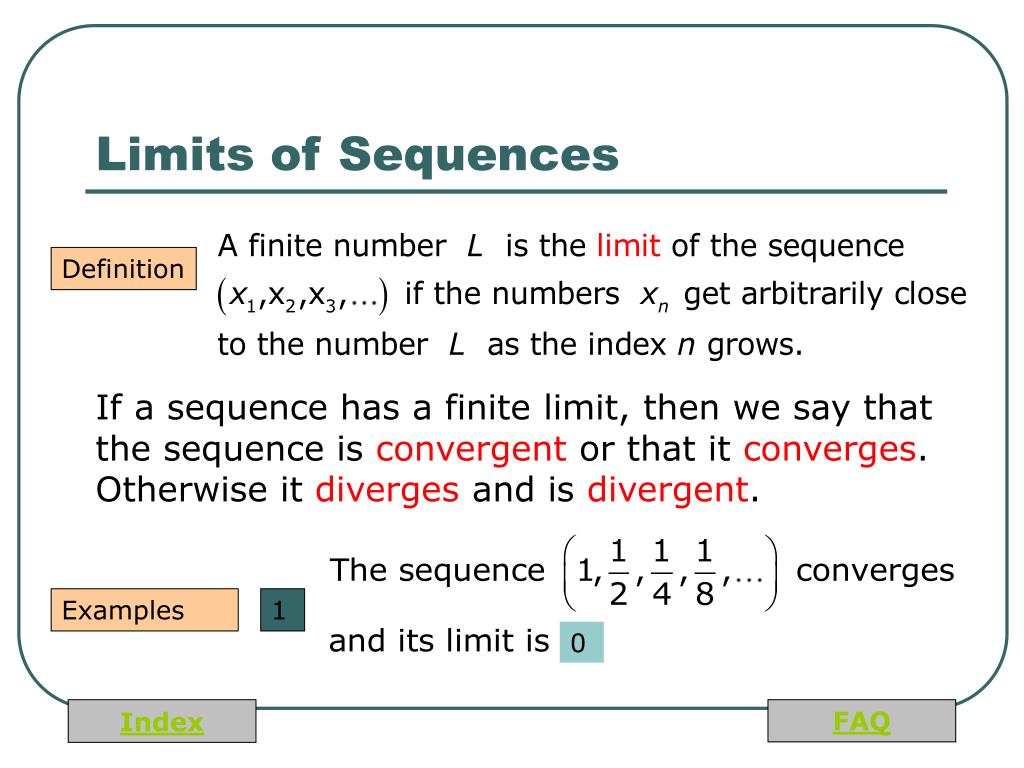
Geometric Sequence: A sequence in which every successive term has a constant ratio is called Geometric Sequence.Į.g. Suppose in a sequence a1, a2, a3, …., an are the terms & difference between each term is ‘d’, then the formula is given by an = a1 + (n−1)d What are the Different Types of Sequences?Īrithmetic sequence: A sequence in which every successive term differs from the previous one is constant, is called Arithmetic Sequence.Į.g. This concentration increases a great deal during a PCR fortunately PCR seems quite robust for a variety of oligo melting temperatures.The sequence is a collection of objects in which repetitions are allowed and order is important. The value of this parameter is less than the actual concentration of oligos in the reaction because it is the concentration of annealing oligos, which in turn depends on the amount of template (including PCR product) in a given cycle. This parameter corresponds to 'c' in Rychlik, Spencer and Rhoads' equation (ii) (Nucleic Acids Research, vol 18, num 21) where a suitable value (for a lower initial concentration of template) is "empirically determined". The default (50nM) works well with the standard protocol used at the Whitehead/MIT Center for Genome Research-0.5 microliters of 20 micromolar concentration for each primer oligo in a 20 microliter reaction with 10 nanograms template, 0.025 units/microliter Taq polymerase in 0.1 mM each dNTP, 1.5mM MgCl2, 50mM KCl, 10mM Tris-HCL (pH 9.3) using 35 cycles with an annealing temperature of 56 degrees Celsius. Primer3 uses this argument to calculate oligo melting temperatures. Note that this is not the concentration of oligos in the reaction mix but of those annealing to template. The nanomolar concentration of annealing oligos in the PCR.

You may need to choose more sensitive blast parameters (under advance parameters) if you want to detect targets with a higher number of mismatches than default.

You can also lower the E value (see advanced parameters) in such case to speed up the search as the high default E value is not necessary for detecting targets with few mismatches to primers.Īdditionally this program has limit detecting targets that are too different from the will detect targets that have up to 35% mismatches to the primer sequences (i.e., a total of 7 mismatches for a 20-mer). For examaple, if you are only interested in targets that perfectly match the primers, you can set the value to 1. If the total number of mismatches between target and at least one primer (for a given primer pair) is equal to or more than the specified number (regardless of the mismatch locations), then any such targets will be ignored for primer specificity check. This is another parameter that can be used to adjust primer specificity stringecy. Try to lower the mismatch value in such case. However, specifying a larger mismatch value may make it more difficult to find such specific primers. The larger the mismatches (especially those toward 3' end) are between primers and the unintended targets, the more specific the primer pair is to your template (i.e., it will be more difficult to anneal to unintended targets). This requires at least one primer (for a given primer pair) to have the specified number of mismatches to unintended targets. You can use your own sequences (accession number, gi, or FASTA sequence) as a search database. This database is recommended if you are not considering variations represented by alternate loci. Mitochondrion and plastid genomes are also included where applicable.Īlthough sequences in this database are completely covered by the Refseq representative genomes database, it does not contain the alternate loci and thus avoids sequence redundancy introduced by including alternate loci.

These are Refseq representative genomes from primary chromosome assemblies (i.e., no alternate loci) for many eukaryotic organisms. Genomes for selected eukaryotic organisms (primary assemblies only): This contains all RNA entries from NCBI's Reference Sequence collection Mitochondrion genomes are included where applicable.

For other species, genomes from diverse isolates of the same species may be included. For the eukaryotes, only one genome is included per species (However, alternate loci of eukaryotic genomes are included where applicable). This database contains minimum redundancy in genome representation. These genomes are among the best quality genomes available at NCBI. This database contains NCBI RefSeq Reference and Representative genomes across broad taxonomy groups including eukaryotes, bacteria, archaea, viruses and viroids. This contains mRNA only from NCBI's Reference Sequence collection


 0 kommentar(er)
0 kommentar(er)
